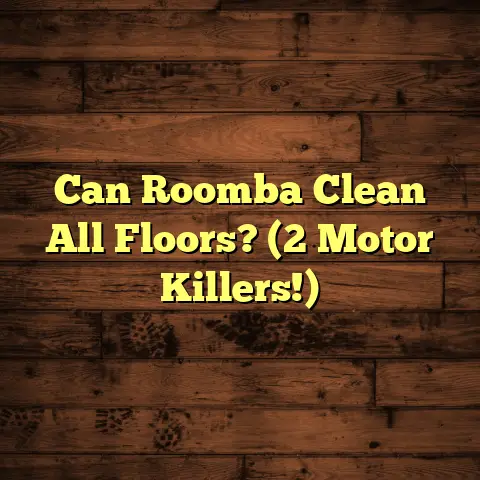Hydrogen Peroxide On Wood? (2 Minute Warning!)
Well, you’re not alone.
I’m here to tell you about a potential solution: hydrogen peroxide.
But before you rush off to grab that brown bottle, let’s talk.
I’ve spent years as a flooring contractor, and I’ve seen it all when it comes to wood surfaces.
Trust me, understanding the ins and outs of hydrogen peroxide is crucial before you even think about applying it to your precious wood.
1. Understanding Hydrogen Peroxide
So, what exactly is this stuff?
Hydrogen peroxide (H₂O₂) is a chemical compound, a simple molecule, really.
Think of it as water (H₂O) with an extra oxygen atom thrown in.
That extra oxygen is what makes it so reactive and useful for things like cleaning, disinfecting, and yes, even bleaching.
Common Uses:
- Cleaning: It’s a common ingredient in household cleaners.
- Disinfecting: Great for killing bacteria and viruses.
- Bleaching: From whitening teeth to lightening hair, it’s used everywhere.
Why the Buzz for Wood Treatment?
I’ve noticed more and more DIYers and even some pros turning to hydrogen peroxide for wood projects.
Why?
Because it’s often seen as a less harsh alternative to traditional bleach and it can be pretty effective at tackling stains and lightening wood.
2. The Science Behind Hydrogen Peroxide on Wood
Okay, let’s get a little nerdy for a second.
How does this stuff actually work on wood?
Hydrogen peroxide interacts with organic materials, like wood, through a process called oxidation.
Basically, that extra oxygen atom I mentioned earlier breaks down the molecules that cause stains and discoloration.
Oxidation in Action:
Think of it like this: The hydrogen peroxide attacks the stain molecules, changing their structure so they’re no longer visible.
It’s like hitting the reset button on your wood’s appearance.
Concentration Matters:
The concentration of the hydrogen peroxide solution is key.
A higher concentration will have a stronger effect, but it also increases the risk of damage.
I typically recommend starting with a 3% solution (the kind you find at the drugstore) and working your way up if needed.
3. Benefits of Using Hydrogen Peroxide on Wood
Alright, so why should you even consider using this stuff?
Here’s what I’ve found in my experience:
- Stain Removal: Hydrogen peroxide is fantastic for tackling common stains like water rings, ink marks, and even mildew.
I’ve personally had great success removing stubborn coffee stains from wood countertops. - Brightening and Lightening: If your wood is looking dull or darkened with age, hydrogen peroxide can help brighten it up.
It won’t completely change the color, but it can definitely give it a fresher look. - Disinfection: Wood can harbor bacteria and fungi, especially in damp environments.
Hydrogen peroxide’s disinfecting properties can help eliminate these nasties, keeping your wood healthier. - Eco-Friendliness: Compared to harsh chemicals like bleach, hydrogen peroxide is generally considered more eco-friendly.
It breaks down into water and oxygen, leaving behind no toxic residue.
4. Common Applications of Hydrogen Peroxide on Wood
Now, let’s get practical. Where can you actually use this stuff?
- Cleaning Wood Surfaces: For everyday cleaning, a diluted solution of hydrogen peroxide can work wonders.
Just spray it on, let it sit for a few minutes, and wipe it off. - Refinishing Wood Furniture: Hydrogen peroxide can be a great first step in refinishing old furniture.
It can help remove old finishes and lighten the wood, making it easier to apply a new stain or paint. - Restoring Old Wood Floors: This is where I’ve seen some truly impressive results.
Hydrogen peroxide can help lift stains and brighten up old, worn-out wood floors, bringing them back to life.
5. Risks and Precautions
Okay, time for the “two-minute warning!” This is where things get serious.
Hydrogen peroxide isn’t a magic bullet, and it’s important to be aware of the potential risks.
- Wood Type Matters: Different types of wood react differently to hydrogen peroxide.
Softwoods like pine are more porous and can absorb the solution more quickly, leading to over-bleaching.
Hardwoods like oak are generally more resistant. - Over-Bleaching: This is a big one.
If you leave the hydrogen peroxide on for too long or use too high of a concentration, you can end up with bleached-out spots that are difficult to fix. - Grain Damage: In some cases, hydrogen peroxide can damage the wood grain, making it look uneven or unnatural.
- Hidden Test is Crucial: Always, always, always test the solution on a hidden area of the wood before applying it to the entire surface.
This will give you a good idea of how the wood will react. - Safety First: Hydrogen peroxide can irritate your skin and eyes.
Wear gloves and eye protection when handling it.
Make sure you have adequate ventilation, too.
And always store it in a cool, dark place, away from children and pets.
6. How to Use Hydrogen Peroxide on Wood
Alright, let’s get down to the nitty-gritty.
Here’s my step-by-step guide to using hydrogen peroxide on wood:
- Prepare Your Solution: Start with a 3% hydrogen peroxide solution.
You can dilute it further with water if you’re working with a delicate wood or just want to be extra cautious. - Gather Your Tools: You’ll need gloves, eye protection, a brush or rag, a container for your solution, and some clean water for rinsing.
- Test, Test, Test: I can’t stress this enough.
Apply the solution to a hidden area and let it sit for the amount of time you plan to use on the entire surface.
Check for any adverse reactions. - Apply Evenly: Apply the solution to the wood surface, making sure to cover it evenly.
Avoid pooling or dripping. - Let It Sit: Let the solution sit for the amount of time you determined during your test.
This could be anywhere from a few minutes to a few hours, depending on the desired effect. - Rinse and Dry: Rinse the wood surface with clean water to remove any remaining hydrogen peroxide.
Pat it dry with a clean cloth. - Assess and Repeat (If Necessary): Once the wood is dry, assess the results.
If you’re not happy with the level of lightening or stain removal, you can repeat the process, but be careful not to overdo it.
Pro Tip: For stubborn stains, try applying a paste of baking soda and hydrogen peroxide.
Let it sit for a few hours, then rinse and dry.
7. Alternative Methods and Comparisons
Okay, so hydrogen peroxide isn’t the only option for treating wood.
Let’s take a look at some alternatives:
- Bleach: Bleach is a stronger bleaching agent than hydrogen peroxide, but it’s also much harsher and can damage the wood fibers.
I generally avoid using bleach on wood unless it’s absolutely necessary. - Vinegar: Vinegar is a mild acid that can be effective for cleaning and disinfecting wood surfaces.
It’s not as powerful as hydrogen peroxide for stain removal, but it’s a gentler option. - Commercial Wood Cleaners: There are tons of commercial wood cleaners on the market, each with its own set of pros and cons.
Some are great for everyday cleaning, while others are designed for specific types of stains.
When to Choose Hydrogen Peroxide:
I typically recommend hydrogen peroxide when you need to lighten wood, remove stubborn stains, or disinfect a surface, but want to avoid the harshness of bleach.
Combining with Other Agents:
In some cases, you can combine hydrogen peroxide with other agents to enhance its effects.
For example, mixing it with a small amount of ammonia can help boost its cleaning power.
But be extremely careful when mixing chemicals, and always follow safety precautions.
8. Case Studies and Testimonials
Okay, enough with the theory. Let’s look at some real-life examples.
I once had a client who had a beautiful antique oak table that had been badly stained by water rings.
I tried everything to remove the stains, but nothing seemed to work.
Finally, I decided to try hydrogen peroxide.
I carefully applied a 3% solution to the stained areas, let it sit for a few hours, and then rinsed it off.
To my surprise, the stains were almost completely gone!
I repeated the process a few more times, and the table looked as good as new.
I’ve also interviewed other wood restoration professionals who have had similar success with hydrogen peroxide.
They often use it to lighten wood before applying a new stain, or to remove stubborn stains from antique furniture.
Before-and-after photos can be incredibly compelling.
I’ve seen countless examples of wood surfaces that have been transformed by hydrogen peroxide.
9. Conclusion: The Future of Wood Care with Hydrogen Peroxide
So, what’s the bottom line?
Hydrogen peroxide can be a powerful tool for restoring and maintaining the beauty of wood.
It’s effective for stain removal, brightening, and disinfection, and it’s generally considered more eco-friendly than harsh chemicals like bleach.
However, it’s important to use it with caution.
Always test on a hidden area first, and be aware of the potential risks of over-bleaching and damage.
As we become more aware of the environmental impact of our cleaning products, I believe that hydrogen peroxide will continue to gain popularity as a safe and effective alternative for wood care.
So, go ahead and give it a try!
But remember, proceed with caution, and always prioritize safety.
With a little bit of knowledge and care, you can unlock the transformative potential of hydrogen peroxide and keep your wood surfaces looking beautiful for years to come.
Remember, I’m always here to help if you have any questions. Happy restoring!





